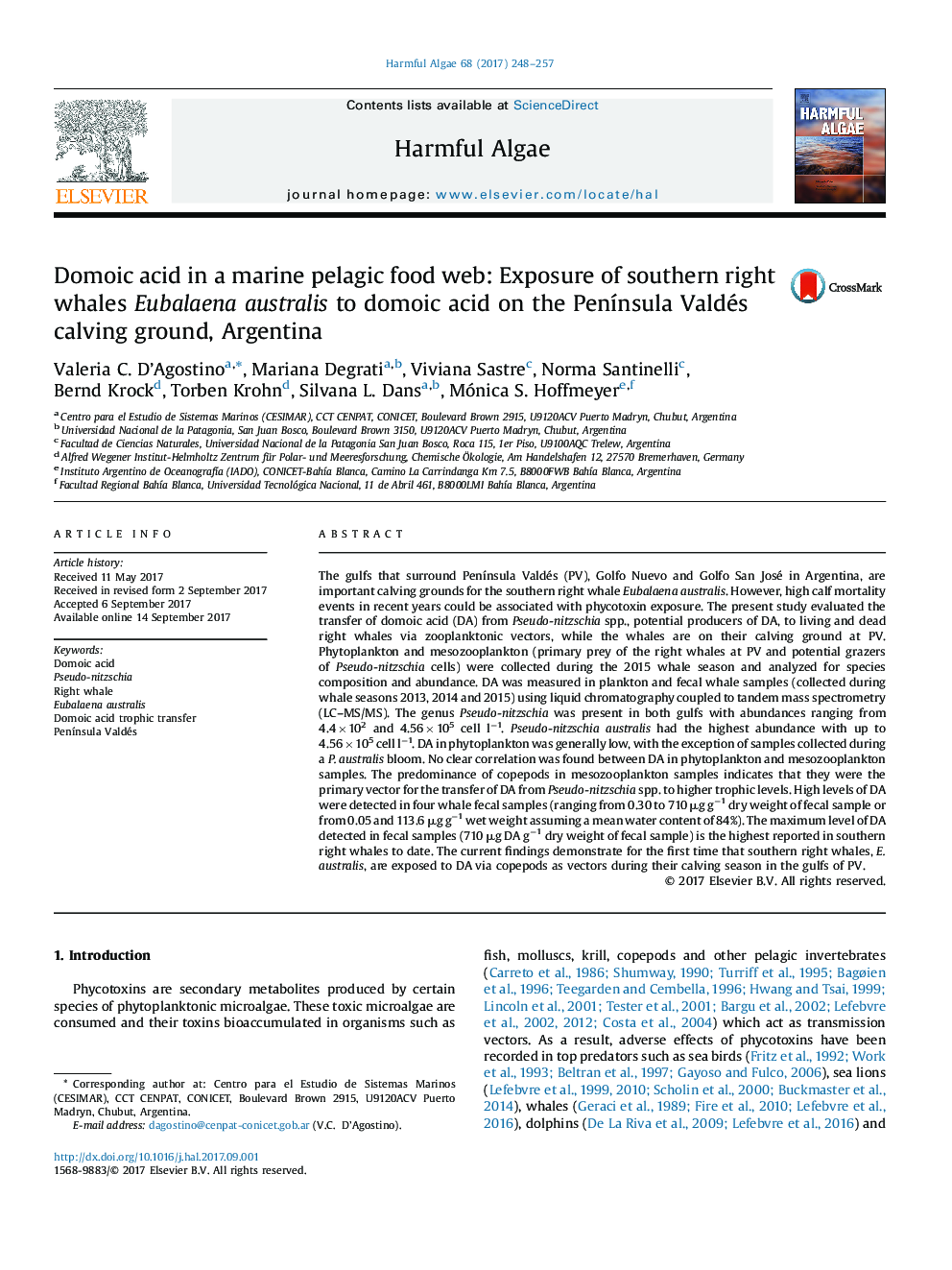| کد مقاله | کد نشریه | سال انتشار | مقاله انگلیسی | نسخه تمام متن |
|---|---|---|---|---|
| 5765769 | 1626904 | 2017 | 10 صفحه PDF | دانلود رایگان |

- PenÃnsula Valdés (PV) is an important calving ground for Eubalaena australis.
- E. australis has experienced high calf mortality events in recent years at PV.
- The deaths of E. australis calves in PV could be related to phycotoxins.
- Evidence of transfer of domoic acid (DA) through pelagic food web to E. australis was documented.
- Results indicate that DA could be associated with recent calf deaths at PV.
The gulfs that surround PenÃnsula Valdés (PV), Golfo Nuevo and Golfo San José in Argentina, are important calving grounds for the southern right whale Eubalaena australis. However, high calf mortality events in recent years could be associated with phycotoxin exposure. The present study evaluated the transfer of domoic acid (DA) from Pseudo-nitzschia spp., potential producers of DA, to living and dead right whales via zooplanktonic vectors, while the whales are on their calving ground at PV. Phytoplankton and mesozooplankton (primary prey of the right whales at PV and potential grazers of Pseudo-nitzschia cells) were collected during the 2015 whale season and analyzed for species composition and abundance. DA was measured in plankton and fecal whale samples (collected during whale seasons 2013, 2014 and 2015) using liquid chromatography coupled to tandem mass spectrometry (LC-MS/MS). The genus Pseudo-nitzschia was present in both gulfs with abundances ranging from 4.4 Ã 102 and 4.56 Ã 105 cell lâ1. Pseudo-nitzschia australis had the highest abundance with up to 4.56 Ã 105 cell lâ1. DA in phytoplankton was generally low, with the exception of samples collected during a P. australis bloom. No clear correlation was found between DA in phytoplankton and mesozooplankton samples. The predominance of copepods in mesozooplankton samples indicates that they were the primary vector for the transfer of DA from Pseudo-nitzschia spp. to higher trophic levels. High levels of DA were detected in four whale fecal samples (ranging from 0.30 to 710 μg gâ1 dry weight of fecal sample or from 0.05 and 113.6 μg gâ1 wet weight assuming a mean water content of 84%). The maximum level of DA detected in fecal samples (710 μg DA gâ1 dry weight of fecal sample) is the highest reported in southern right whales to date. The current findings demonstrate for the first time that southern right whales, E. australis, are exposed to DA via copepods as vectors during their calving season in the gulfs of PV.
Journal: Harmful Algae - Volume 68, September 2017, Pages 248-257